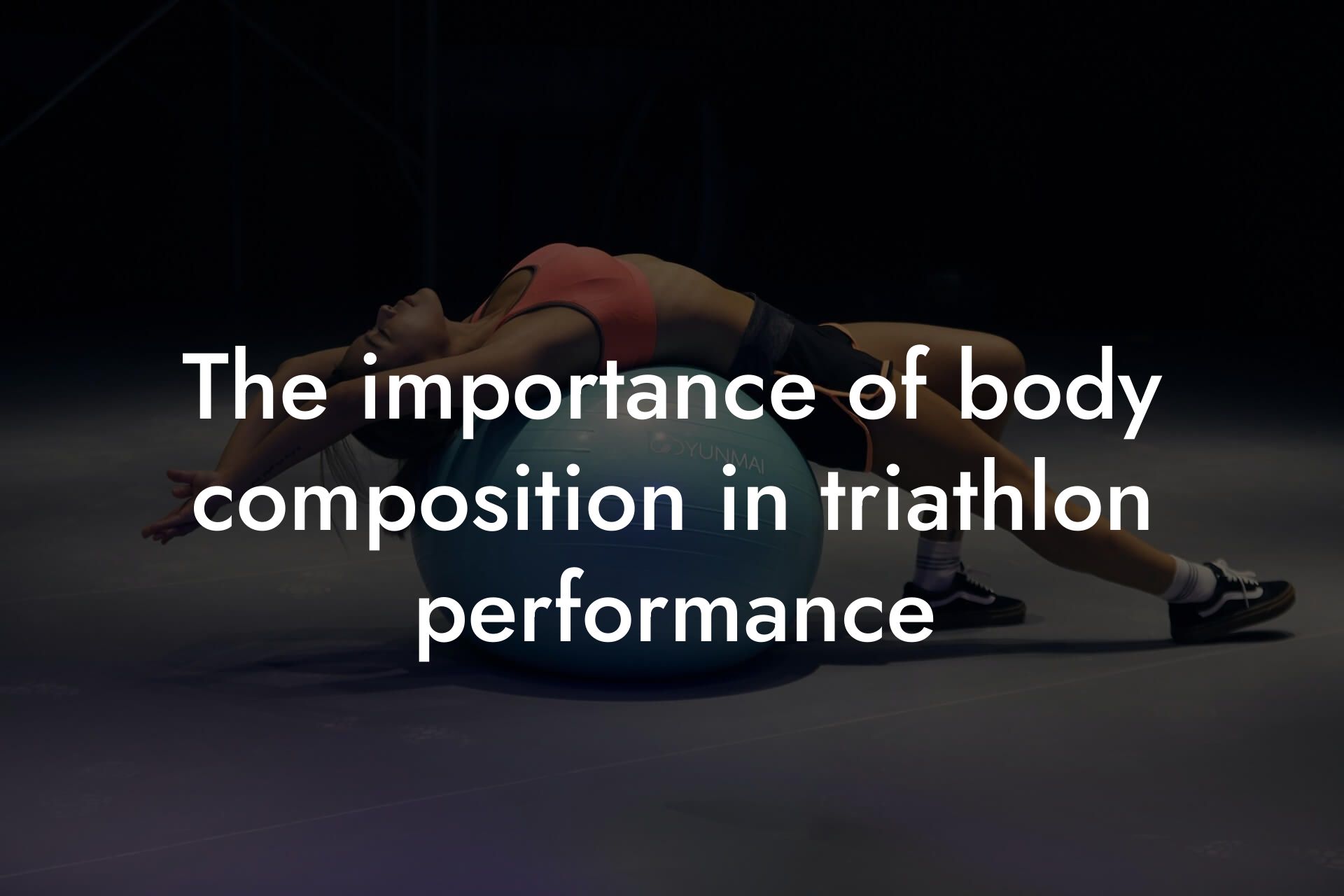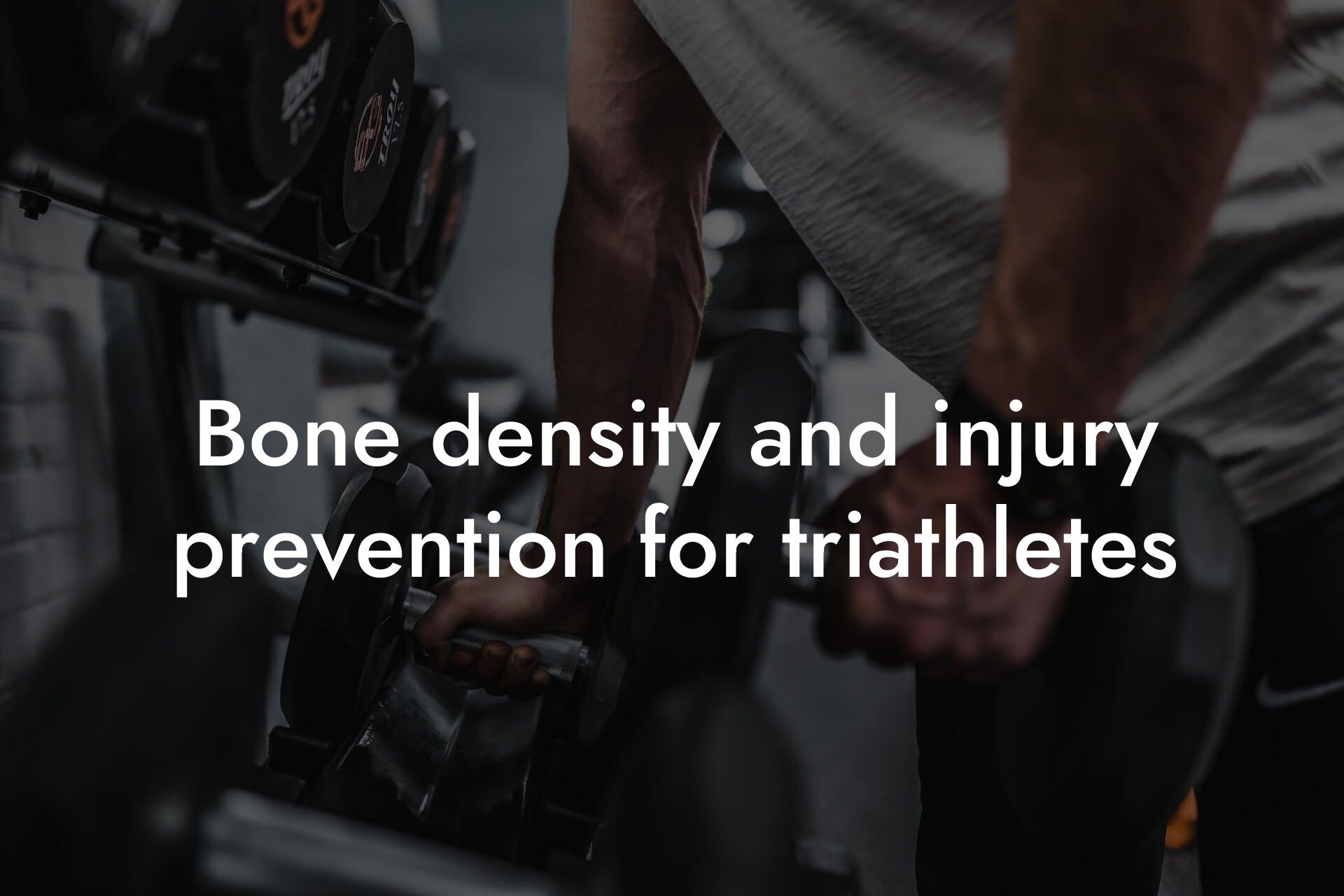As a triathlete, you're likely no stranger to the importance of building and maintaining a strong, lean physique. But did you know that lean muscle mass plays a critical role in your performance and overall success in triathlon events? In this article, we'll delve into the significance of lean muscle mass, how it impacts your triathlon performance, and provide actionable tips on how to optimize your lean muscle mass for peak performance.
Table of Contents
What is Lean Muscle Mass?
Lean muscle mass refers to the amount of muscle tissue in your body that is free from excess fat. It's the muscle mass that is responsible for generating power, speed, and endurance during exercise. In triathletes, lean muscle mass is particularly important, as it directly affects their ability to perform at high intensities over extended periods. A higher percentage of lean muscle mass can improve your overall athletic performance, reduce your risk of injury, and enhance your recovery.
How Does Lean Muscle Mass Impact Triathlon Performance?
Lean muscle mass plays a crucial role in triathlon performance in several ways:
• Power Output: The more lean muscle mass you have, the more power you can generate during cycling, running, and swimming. This is especially important in triathlons, where explosive power is required to overcome obstacles and maintain speed.
• Endurance: Lean muscle mass helps you maintain a high pace over extended periods. With more muscle mass, you can sustain a higher intensity effort for longer, giving you a competitive edge in triathlon events.
• Injury Prevention: A higher percentage of lean muscle mass can help reduce your risk of injury. Stronger muscles provide better support for your joints, reducing the likelihood of strains, sprains, and other common triathlon injuries.
• Recovery: Lean muscle mass aids in faster recovery after intense exercise. With more muscle mass, your body can repair and rebuild tissues more efficiently, reducing muscle soreness and downtime.
Factors Affecting Lean Muscle Mass in Triathletes
Several factors can impact lean muscle mass in triathletes, including:
• Diet: A diet that is deficient in protein, calories, or essential nutrients can hinder lean muscle mass development.
• Training: Inadequate training, overtraining, or a lack of resistance training can negatively impact lean muscle mass.
• Age: As we age, our bodies naturally lose muscle mass. Triathletes over 40 may need to work harder to maintain their lean muscle mass.
• Hormones: Hormonal imbalances, such as low testosterone levels, can affect lean muscle mass development.
How to Optimize Lean Muscle Mass for Triathlon Performance
To optimize lean muscle mass for triathlon performance, follow these tips:
• Resistance Training: Incorporate strength training exercises 2-3 times a week to build and maintain lean muscle mass. Focus on compound exercises like squats, deadlifts, and bench press.
• Proper Nutrition: Ensure you're consuming a balanced diet that includes 1.2-1.6 grams of protein per kilogram of body weight daily. Additionally, focus on complex carbohydrates, healthy fats, and essential nutrients.
• Periodized Training: Vary your training intensity and volume to avoid plateaus and prevent overtraining.
• Rest and Recovery: Prioritize rest and recovery days to allow your muscles to repair and rebuild. Aim for 7-9 hours of sleep and incorporate stretching, foam rolling, and massage into your recovery routine.
Measuring Lean Muscle Mass
Accurately measuring lean muscle mass is crucial for triathletes. At Tano Performance Group, we use Dual-Energy X-ray Absorptiometry (DEXA) scans to provide a comprehensive body assessment, including lean muscle mass measurements. DEXA scans offer a precise and non-invasive way to track changes in lean muscle mass over time, helping you optimize your training and nutrition strategies.
In conclusion, lean muscle mass plays a vital role in triathlon performance, impacting power output, endurance, injury prevention, and recovery. By understanding the factors that affect lean muscle mass and implementing strategies to optimize it, triathletes can gain a competitive edge and improve their overall performance. Remember to prioritize resistance training, proper nutrition, periodized training, and rest and recovery to maximize your lean muscle mass. With the help of DEXA scans, you can track your progress and make data-driven decisions to take your triathlon performance to the next level.
Takeaway
As a triathlete, it's essential to prioritize lean muscle mass development to optimize your performance. By incorporating the tips and strategies outlined in this article, you can improve your power output, endurance, and overall performance. Don't forget to track your progress with DEXA scans and make adjustments to your training and nutrition strategies accordingly. With a focus on lean muscle mass, you'll be well on your way to achieving your triathlon goals.
Frequently Asked Questions
What is lean muscle mass and why is it important for triathlon events?
Lean muscle mass refers to the amount of muscle tissue in the body that is not composed of fat. It is essential for triathlon events because it directly affects an athlete's power, speed, and endurance. Having a higher lean muscle mass enables triathletes to generate more force and speed during swimming, cycling, and running, ultimately leading to improved performance.
How does lean muscle mass impact swimming performance?
Lean muscle mass plays a significant role in swimming performance as it enables athletes to generate more power and speed in the water. A higher lean muscle mass allows swimmers to maintain a faster pace and recover more efficiently between strokes, giving them a competitive edge.
What is the ideal lean muscle mass percentage for triathletes?
The ideal lean muscle mass percentage for triathletes varies depending on the individual's body composition and goals. However, a general guideline is to aim for a lean muscle mass percentage of 15-20% for men and 20-25% for women. This range allows for optimal performance while minimizing excess body fat.
How can I increase my lean muscle mass for triathlon events?
To increase lean muscle mass, triathletes should focus on a combination of proper nutrition, consistent training, and adequate rest. This includes consuming a balanced diet rich in protein, complex carbohydrates, and healthy fats, as well as engaging in resistance training exercises that target all major muscle groups.
What are some effective exercises for building lean muscle mass?
Effective exercises for building lean muscle mass include squats, deadlifts, bench press, rows, and lunges. These exercises work multiple muscle groups at once, promoting overall muscle growth and development. It's essential to incorporate a variety of exercises into your training routine to ensure overall muscle balance.
How often should I train to build lean muscle mass?
Aim to train 3-4 times per week, with at least one day of rest in between. This allows your muscles time to recover and rebuild, which is essential for muscle growth and development. Be sure to vary your training routine to avoid plateaus and prevent overtraining.
What role does nutrition play in building lean muscle mass?
Nutrition plays a critical role in building lean muscle mass. A diet rich in protein, complex carbohydrates, and healthy fats provides the necessary building blocks for muscle growth and development. Aim to consume 1.2-1.6 grams of protein per kilogram of body weight daily, and prioritize whole, nutrient-dense foods.
How can I ensure I'm getting enough protein in my diet?
To ensure you're getting enough protein, focus on consuming lean protein sources such as chicken, fish, eggs, and lean beef. Aim to include a source of protein in every meal, and consider supplementing with protein powder or bars if necessary. Additionally, prioritize whole, nutrient-dense foods over processed and packaged options.
What are some common mistakes triathletes make when trying to build lean muscle mass?
Common mistakes triathletes make when trying to build lean muscle mass include overtraining, under-eating, and neglecting proper recovery techniques. It's essential to strike a balance between training, nutrition, and rest to support muscle growth and development.
How long does it take to see results from building lean muscle mass?
The time it takes to see results from building lean muscle mass varies depending on individual factors such as training experience, nutrition, and genetics. However, with consistent training and proper nutrition, triathletes can expect to see noticeable improvements in 6-12 weeks.
Can I build lean muscle mass without gaining weight?
Yes, it is possible to build lean muscle mass without gaining weight. This requires a focus on increasing muscle mass while simultaneously reducing body fat percentage. A combination of resistance training, high-intensity interval training, and a calorie-controlled diet can help achieve this goal.
How does lean muscle mass impact cycling performance?
Lean muscle mass plays a critical role in cycling performance as it enables athletes to generate more power and speed on the bike. A higher lean muscle mass allows cyclists to maintain a faster pace and recover more efficiently between intervals, giving them a competitive edge.
What is the relationship between lean muscle mass and running performance?
Lean muscle mass is essential for running performance as it enables athletes to generate more force and speed with each stride. A higher lean muscle mass allows runners to maintain a faster pace and recover more efficiently between intervals, giving them a competitive edge.
How can I maintain lean muscle mass during periods of intense training?
To maintain lean muscle mass during periods of intense training, prioritize proper nutrition, adequate rest, and consistent training. Focus on consuming a balanced diet rich in protein, complex carbohydrates, and healthy fats, and aim to get 7-9 hours of sleep per night.
Can I build lean muscle mass at any age?
Yes, it is possible to build lean muscle mass at any age. While muscle growth and development may slow down with age, consistent training and proper nutrition can still lead to significant improvements in lean muscle mass.
How does lean muscle mass impact bone density?
Lean muscle mass has a positive impact on bone density as it helps to stimulate bone growth and development. A higher lean muscle mass can help to reduce the risk of osteoporosis and fractures, particularly in older adults.
What is the relationship between lean muscle mass and body fat percentage?
Lean muscle mass and body fat percentage are inversely related, meaning that as lean muscle mass increases, body fat percentage typically decreases. A higher lean muscle mass can help to increase metabolism and burn more calories at rest, leading to improved body composition.
Can I build lean muscle mass without weights or resistance bands?
Yes, it is possible to build lean muscle mass without weights or resistance bands. Bodyweight exercises such as push-ups, squats, and lunges can be effective for building muscle, as can high-intensity interval training and plyometric exercises.
How does lean muscle mass impact overall health and well-being?
Lean muscle mass has a positive impact on overall health and well-being as it helps to improve insulin sensitivity, reduce the risk of chronic diseases, and enhance mental health. A higher lean muscle mass can also improve sleep quality and increase energy levels.
What are some common myths about building lean muscle mass?
Common myths about building lean muscle mass include the idea that it's only possible for young people, that it requires a lot of supplements, and that it's only for athletes. However, with consistent training and proper nutrition, anyone can build lean muscle mass and improve their overall health and performance.
How can I track my progress when building lean muscle mass?
To track progress when building lean muscle mass, focus on measurements such as body fat percentage, lean muscle mass percentage, and circumference measurements. Additionally, track your training progress, nutrition, and overall performance to ensure you're meeting your goals.
What role does recovery play in building lean muscle mass?
Recovery plays a critical role in building lean muscle mass as it allows your muscles time to repair and rebuild. Adequate rest, stretching, and foam rolling can help to promote recovery and support muscle growth and development.
Here are some related articles you might love...
- The importance of body composition in triathlon performance
- Using DEXA scans to monitor triathlete health
- Bone density and injury prevention for triathletes
- Recovery techniques for triathletes after races
- Balancing training for swimming, cycling, and running
- Nutrition strategies for triathlon training and competition
- Strength training for triathletes to improve overall performance
- Off-season training strategies for triathletes
- Reducing body fat for better endurance in triathlons
Zak Faulkner
Zak Faulkner is a leading authority in the realm of physical health and body composition analysis, with over 15 years of experience helping professionals optimise their fitness and well-being. As one the experts behind Tano Performance Group, Zak has dedicated his career to providing in-depth, science-backed insights that empower clients to elevate their physical performance and overall health.
With extensive knowledge of DEXA technology, Zak specializes in delivering comprehensive body assessments that offer precise data on body fat, muscle mass, bone density, and overall physique. His expertise enables individuals to make informed decisions and achieve their fitness goals with accuracy and confidence. Zak’s approach is rooted in a deep understanding of human physiology, combined with a passion for helping clients unlock their full potential through personalised strategies.
Over the years, Zak has earned a reputation for his commitment to excellence, precision, and client-focused service. His guidance is trusted by top professionals who demand the best when it comes to their health. Whether advising on fitness programs, nutritional strategies, or long-term wellness plans, Zak Faulkner’s insights are a valuable resource for anyone serious about taking their health and fitness to the next level.
At Tano Performance Group, Zak continues to lead our Content Team revolutionising how professionals approach their physical health, offering unparalleled expertise that drives real results.




